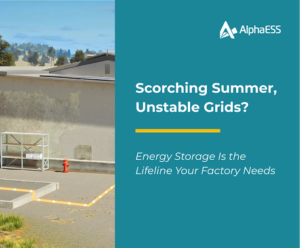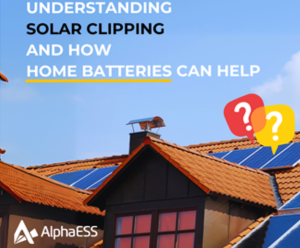Understanding Solar Clipping and How Home Batteries Can Help
2025-07-30
Solar energy is a great way to power your home, but have you heard of something called "solar clipping"?
It might sound like a niche technical term, but if you have a solar system or are thinking about getting one, it's definitely something worth understanding. Solar clipping can limit how much energy your panels actually produce, meaning you might not be getting the full value out of your system.
In this post, we'll explain what solar clipping is in simple terms, why it happens, and how adding a home battery can help you make the most of your solar power, boosting efficiency, reducing waste, and saving you more in the long run.
What is Solar Clipping?
If you've ever opened your solar monitoring app to check your system's performance throughout the day, you might have seen a nice, smooth bell-shaped curve showing your solar energy production, like the chart below:
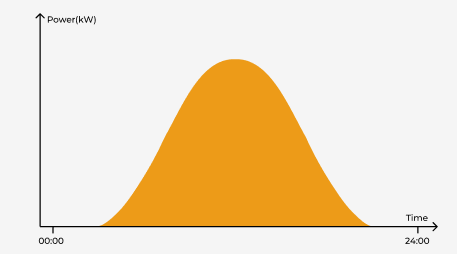
But on certain days, especially during sunny summer afternoons, you may spot something unusual: the peak of the curve appears to be "chopped off," as if someone took a pair of scissors and trimmed the top. (see the chart below)
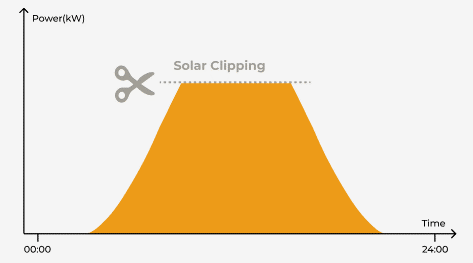
This phenomenon is known as solar clipping.
Why Does Solar Clipping Matter?
Solar clipping happens when your solar panels generate more electricity than your inverter can handle. Since the inverter is responsible for converting the DC power from your panels into the AC power your home can use, it has a built-in limit.
Think of it like trying to pour too much water through a small funnel; some of it simply spills over. That "spillover" is the extra energy your system could have delivered, but didn't. Instead, it gets clipped and wasted.
This means you're not fully benefiting from all the power your panels are capable of producing. And while a little clipping might seem harmless, over time those missed kilowatt-hours can add up, reducing your system's overall efficiency and possibly increasing your reliance on grid electricity (and your energy bills along with it).
How Home Batteries Can Help?
One of the most effective ways to reduce solar clipping is by adding a home battery system.
Here's why it works: both your solar panels and your battery operate using direct current (DC), while your home appliances use alternating current (AC). The inverter's job is to convert DC power from your panels into AC power for home use. But when your solar panels generate more DC electricity than your inverter can convert at one time, that excess energy would normally be clipped or wasted.
With a battery, however, that extra power doesn't go to waste. Instead, it can be stored directly in the battery as DC power, bypassing the inverter's AC output limit.
Take the AlphaESS SMILE-G3-S5 system, for example. Its inverter has a rated AC output of 5 kW. On a bright summer day, your oversized PV array might generate up to 10 kW. Without a battery, the system would cap output at 5 kW—wasting the rest. But with a battery connected, the additional 5 kW can be stored instantly, ensuring you capture the full value of your solar production and avoid clipping. (See diagram below)
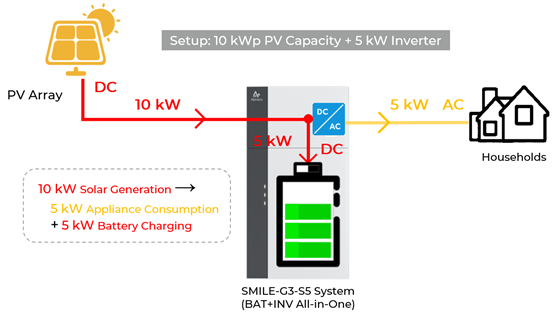
But Not All Batteries Are Created Equal
It's important to note: not every battery system can help reduce solar clipping.
To effectively capture clipped solar energy, your system needs to use a DC-coupled battery, not an AC-coupled one.
Let's go back to the example of the AlphaESS SMILE-G3-S5. This is a DC-coupled solution, meaning the battery is connected on the DC side of the inverter. In this setup, any excess solar energy can charge the battery directly, without needing to be converted into AC power first. This allows your system to store surplus energy efficiently, avoiding waste and bypassing the inverter's AC output limits.
Unfortunately, this isn't possible with AC-coupled batteries. Because they're connected on the AC side of the inverter, they rely on available AC capacity to charge. That means your inverter's output has to be shared between powering your home and charging the battery. So, if your home is already drawing 5 kW and that's the inverter's limit, there's no room left for charging the battery—clipping still occurs. (See diagram below)
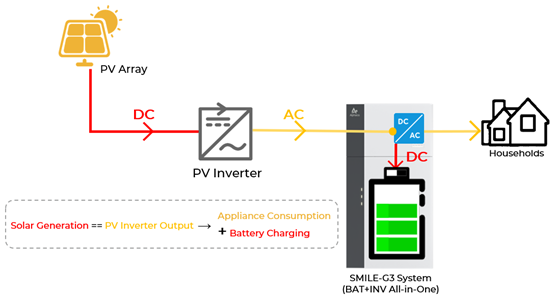
As a result, AC-coupled batteries are unable to capture the excess DC energy generated by your solar panels.
In ideal conditions (ignoring conversion losses), the maximum output of your PV array is limited by the rated capacity of your PV inverter. So even when the sun is shining at full strength, your solar production is still capped, and clipping remains an issue. Simply put, an AC-coupled battery can't solve the problem. Want to dive deeper into the differences between AC- and DC-coupled battery systems?
Check out this detailed guide:
(25) Understanding PV-BESS Coupling Methods: How to Choose the Best System for Your Needs | LinkedIn
Why Am I Still Seeing Solar Clipping Even After Installing a Battery?
So, you've invested in a DC-coupled battery storage system, and yet—on some days—you still notice solar clipping in your energy data. What's going on?
The most common reason is simple: your battery is already full—or nearly full.
When there's no more room to store extra DC power, your system has nowhere to send the surplus solar energy. As a result, clipping happens again.
You may have seen this reflected in your generation curve. It often looks like this:
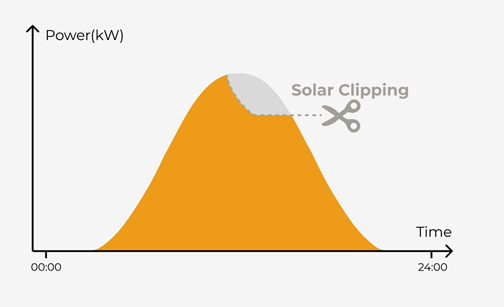
• At first, there's no clipping, because any solar production above your inverter's AC limit is being stored directly into the battery.
• As the battery approaches full capacity, charging begins to slow down, and the battery can absorb less and less energy.
• At this point, your solar system starts to shed excess production, and the generation curve begins to flatten or drop.
• Finally, once the battery is 100% full, clipping returns in full force, just like before.
So what can you do about this? Are there ways to avoid or reduce clipping even when your battery is full?
Increase Battery Capacity to Maximize Solar Energy Use
One of the most straightforward ways to reduce solar clipping is to expand your battery capacity, creating plenty of room to absorb your solar system's full power output.
By adding more battery storage, you can significantly improve the utilization of a large PV array. Plus, during peak electricity demand hours after sunset, your battery can supply stored energy, helping you cut down on costly utility bills.
Then, as the sun rises the next day, your battery frees up space again to soak up fresh solar energy, bringing you closer to true energy independence.
For example, the AlphaESS SMILE-G3 single-phase series supports up to six battery modules, reaching a total capacity of 60.5 kWh. This makes it an ideal choice for homes with high power and energy needs, empowering families to achieve 100% self-consumption and energy self-sufficiency from their solar power.
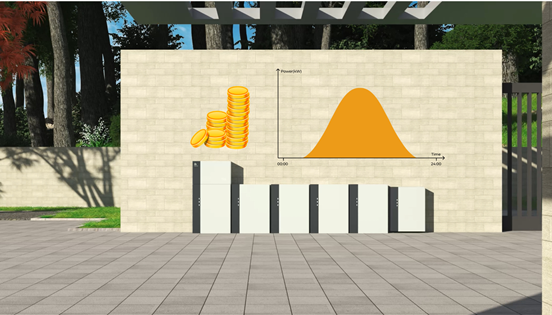
Key TakeWays:
1. Solar clipping is a common occurrence during sunny summer days that reduces the amount of solar energy your system produces and impacts your overall savings.
2. Installing a DC-coupled battery storage system is an effective way to reduce or eliminate solar clipping.
3. For those who already have a proper battery system but still experience clipping, adding more battery capacity can further solve the problem and maximize solar utilization.



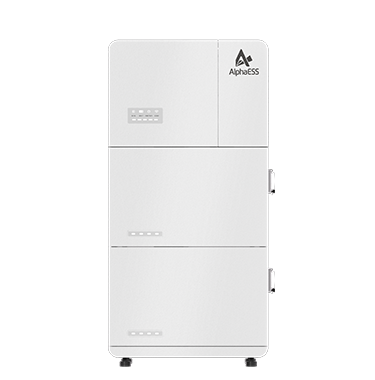
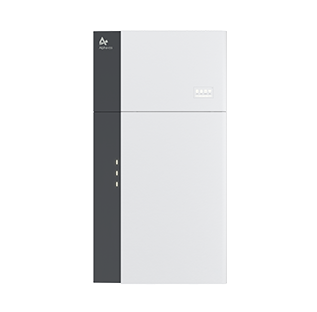
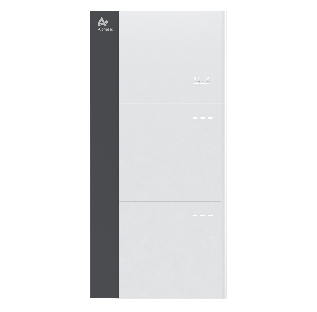
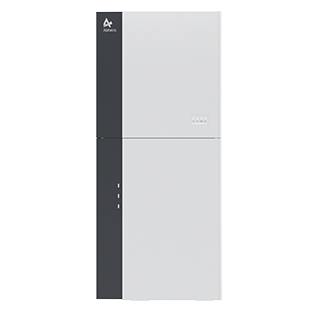
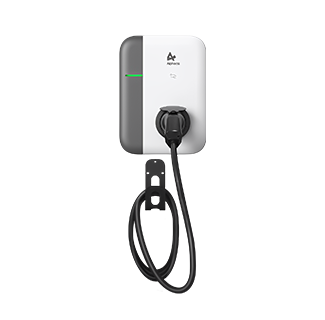
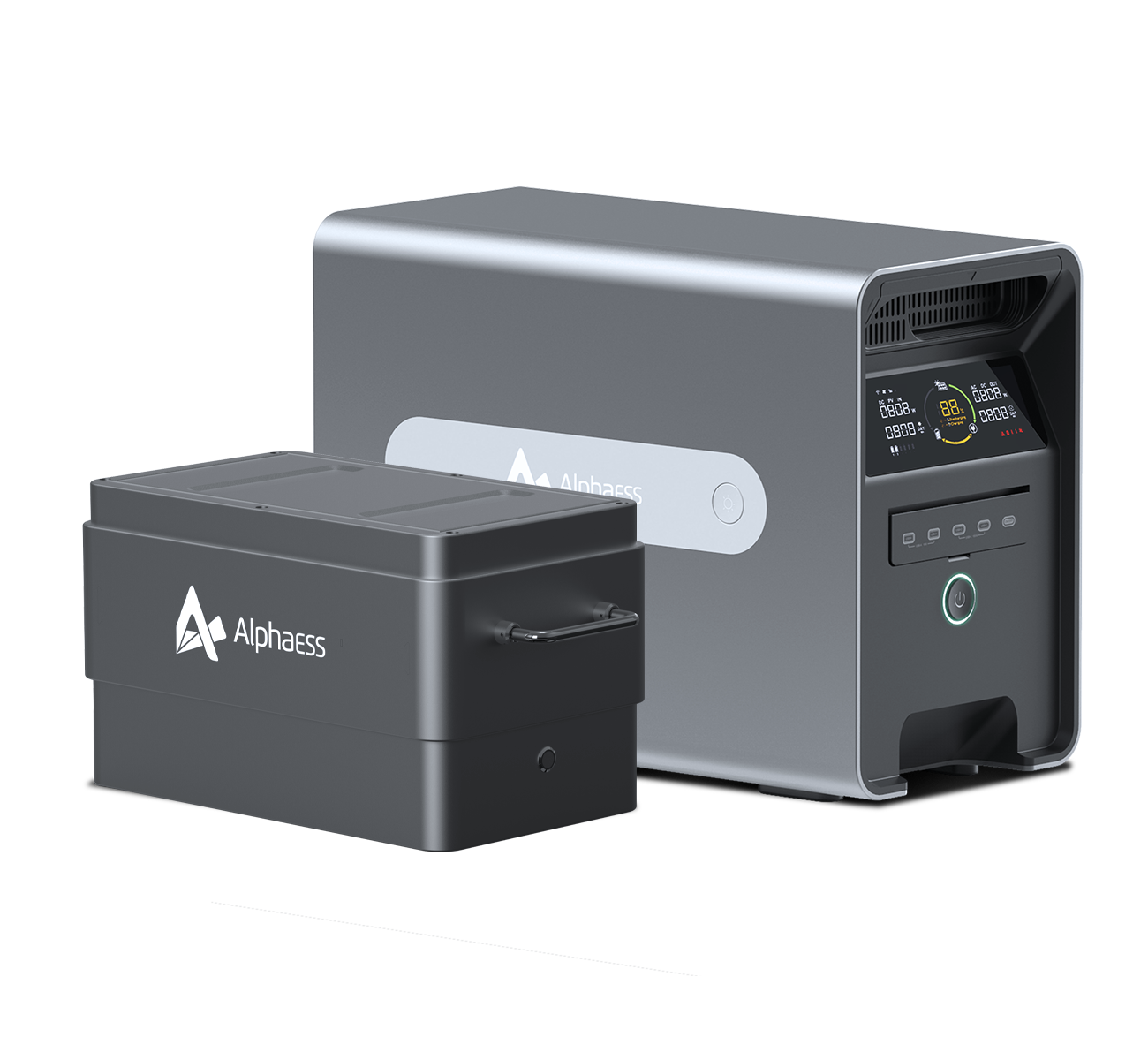
.png)
(3).png)
(2).png)
(545x562xiangsu)(2).png)

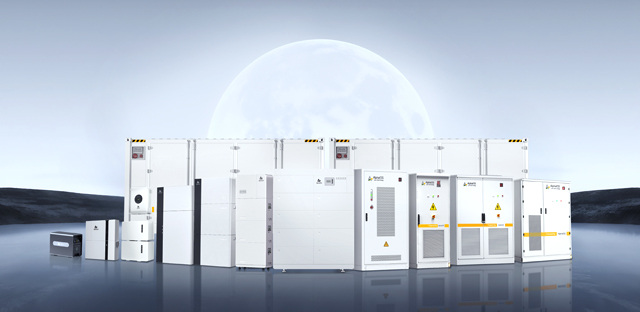
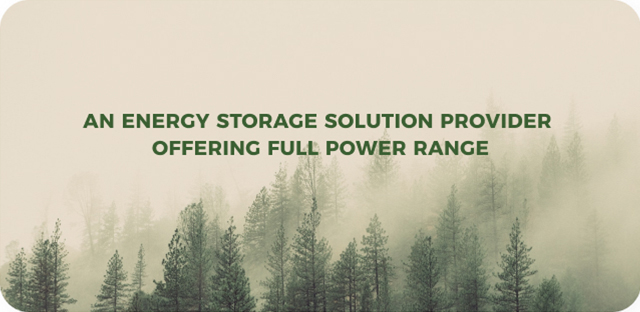
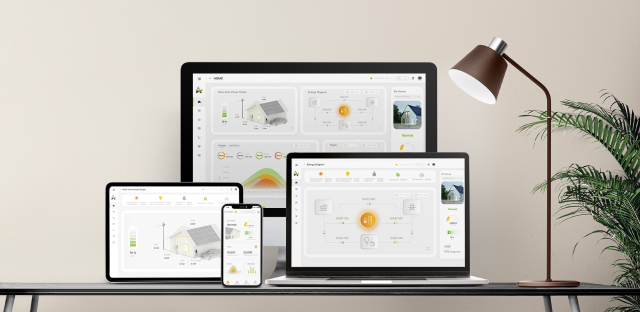
.svg)

















